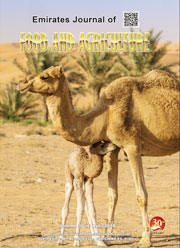SPRAY-DRYING OF COCONUT TREACLE INTO AN AMORPHOUS POWDER
DOI:
https://doi.org/10.9755/ejfa.v26i8.17581Keywords:
Coconut treacle, Spray- drying, Maltodextrin, Stickiness, Drying aidAbstract
We have investigated the amount of drying aid required to produce amorphous coconut treacle powder through spray-drying. Maltodextrin (DE-10) was used as the drying aid. Three different formulations of coconut treacle maltodextrin: water (30%: 20%: 50%, 35%: 15%: 50% and 40%: 10%: 50%) were spray dried at inlet and outlet temperatures of 165°C and 65°C, respectively. Powder recovery in a pilot scale spray-dryer was used as a measure of the ease of spray-drying for a given formulation. The spray-dried coconut treacle powder was characterized for moisture content, water activity, sugar profile and particle morphology. The best powder recovery (58.6±3.5%) was obtained for the formulation of coconut treacle: maltodextrin: water in the ratio of 35%:15%:50%. The initial moisture content and water activity value of the spray-dried coconut treacle powder were 1.04±0.003% and 0.43±0.00%, respectively. It was interesting to note that both the moisture content and the water activity of treacle powder did not vary significantly (p>0.05) on storage of one year. The scanning electron micrograph of spray-dried coconut treacle powder showed that the particles were spherical in shape The morphology of these particles apparently gives a good indication of the coconut treacle powder being amorphous. The sugar profile of this coconut treacle powder showed that it had a total sugar content of 88.2±0.05% out of which 46.6±0.02% was sucrose, 23.0±0.02% was glucose and 18.6±0.01% was fructose.










 .
. 